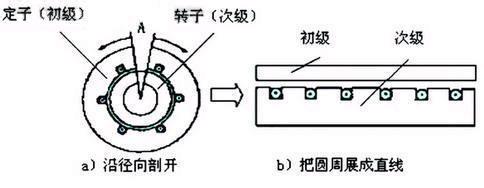Telephone: 400-007-7724
Fax: +86 512-82175788
Postcode: 215300
E-mail: info@tmmotion.com
Address: Building 2£¬No.1299 Fuchunjiang Road,Development Zone Kunshan City Jiangsu Province, China.
¡¡¡¡A linear motor is a transmission that converts electrical energy directly into linear motion mechanics without the need for any intermediate switching mechanism.
¡¡¡¡A linear motor can be thought of as an evolution of a rotating motor in terms of its structure, which can be seen as cutting a radial motor in a radial direction and then straightening the circumference of the motor. This is the most original linear motor that has evolved from a rotating electric machine.

¡¡¡¡The side of the linear motor evolved from the stator is called the primary or primary side, and the side evolved by the rotor is called the secondary or secondary. The primary pass to communicate, the secondary force in the electromagnetic force along the primary to do linear motion. At this time the primary to do a very long, extended to the movement to reach the position, while the secondary does not need that long. In fact, the linear motor can do a very long primary, you can also do a very long secondary; both primary fixed, secondary mobile, can also be secondary fixed, primary move.
¡¡¡¡The working principle of a linear motor is similar to that of a rotary motor. In the case of a linear induction motor, when the primary winding is connected to an AC power source, a traveling wave magnetic field is generated in the air gap, and the secondary electromotive force is induced by the secondary magnetic field, and the current is generated in the air gap Magnetic field interaction to produce electromagnetic thrust. If the primary fixed, the secondary action in the thrust to do linear motion; the other hand, the primary to do linear motion.
¡¡¡¡In practical applications, the primary and secondary are made into different lengths to ensure that the coupling between the primary and the secondary remains constant within the required travel range. The linear motor can be short primary and secondary, or it can be a long primary. Taking into account the manufacturing costs, operating costs, are generally used to short primary level.

¡¡¡¡The above article from the focus on the linear motor with the Tongmao Electronics (www.tmmotion.com/english/index.asp), reproduced, please indicate the source.